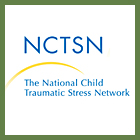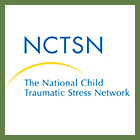Prevention & Intervention
- Alcohol and Drugs (24)
- Behavior Management (21)
- Bullying (70)
- Cyber Bullying (46)
- Foster Youth (44)
- Gangs and Violence (30)
- Homeless and Runaway Youth (16)
- Mentoring Programs for Youth (25)
- Safety (59)
- School Counseling (20)
Strategies for helping children make sense of a violent world include historical perspective, risk assessment of their daily lives, writing to leaders, and reaching out to victims.
SAVE is a student driven organization. Students learn about alternatives to violence and practice what they learn through school and community service projects. As they participate in SAVE activities, students learn crime prevention and conflict management skills and the virtues of good citizenship, civility, and nonviolence.
Expert advice on how to handle difficult questions and conversations in the classroom
This is an article that provides “10 Ways to Talk to Students about Sensitive Issues in the News”.
This is an article that provides tips for talking to children about the shooting.
This factsheet discusses the nature of trauma, its effects on children and youth, and ways to help your child. By increasing your understanding of trauma, you can help support your child’s healing, your relationship with them, and your family as a whole.
APA is the leading scientific and professional organization representing psychology in the United States, with more than 115,700 researchers, educators, clinicians, consultants and students as its members.
“Talking to Children About Tragedies & Other News Events” is an article about how to approach your children after a disaster has transpired.
“Changing the Way We Talk to Teens About Tragic Events” is an article about some strategies for talking to teens about mass shootings, terrorism or unexpected attacks.
Established by Congress in 2000, the National Child Traumatic Stress Network (NCTSN) brings a singular and comprehensive focus to childhood trauma. NCTSN’s collaboration of frontline providers, researchers, and families is committed to raising the standard of care while increasing access to services. Combining knowledge of child development, expertise in the full range of child traumatic experiences, and dedication to evidence-based practices, the NCTSN changes the course of children’s lives by changing the course of their care.
The National Child Traumatic Stress Network recently came out with a child trauma toolkit for educators.
This report from Child Trends and the National Center for Children in Poverty includes a review of the prevalence of early childhood trauma and its effects. The report offers promising strategies for child care and preschool programs looking to help young children who have endured trauma, and presents recommendations for policymakers to support trauma-informed early care.










